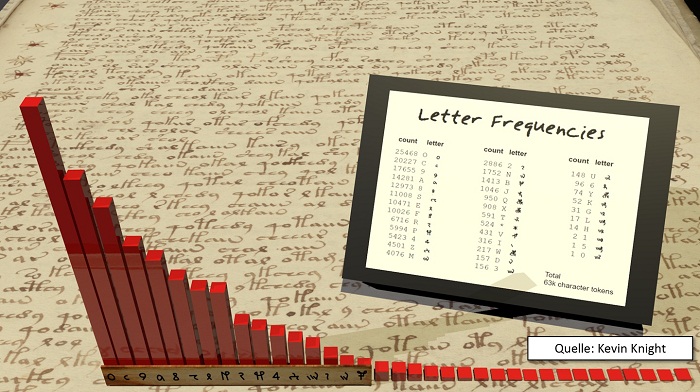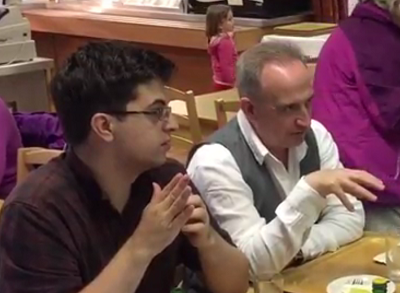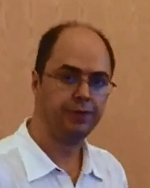British professor Gordon Rugg believes the text in the Voynich manuscript is a meaningless letter sequence created with a simple “table and grille” method. Voynich manuscript expert Nick Pelling called this theory a “quasi-academic nonsense that only an idiot would be convinced by”. Here’s my summary of this debate.
In 2004, Gordon Rugg published his “table and grille” method in Cryptologia. This article received considerable interest. While few believed that Gordon’s method was the definite answer to the question how the text in the Voynich manuscript was created, many accepted that it was an interesting hypothesis and that it proved that a large amount of Voynich-like text could be produced with a simple method.
The hoax hypothesis becomes popular
For instance, Austrian Voynich scholar Andreas Schinner wrote in another Cryptologia publication in 2007:
“It seemed unlikely that a medieval hoaxer (or even an early 20th century forger) could create such a convincing ‘facsimile language’ within reasonable time. The work by Gordon Rugg has proven that this need not necessarily be true: an algorithm feasible even with medieval technology (the ‘table-and-grille’ method) makes it possible for a single person to generate a text as long and complex as the VMS within approximately three months. This, however, is just a possibility and far from a proof of the hoax hypothesis.”
After he had introduced a number of statistical text examinations Schinner concluded:
“Thus, the hoax hypothesis may provide the most convincing explanation base for the data. A variant of the ‘table-and-grille’ method still is a promising candidate, if the table is filled with syllables selected under involvement of some ‘lottery algorithm’ producing the observed statistical effects.”
In general, Gordon’s and Andreas’ papers made the nonsense hypothesis a lot more popular in the Voynich community.
Critique
However, there were also critics. One of the main critical questions, which was also asked by me, was whether this method really produces output that has as much in common with natural language as the Voynich manuscript text. Among other things, the letter frequencies, the word frequencies, the token frequencies and the entropy of the Voynich manuscript text are consistent with natural language. It is hard to believe at first view that Gordon’s method produces something like this, as this method does not include natural language at all. Andreas Schinner wrote in his Cryptologia article:
“Furthermore, the ‘table-and-grille’ method as investigated so far does not explain all of the statistical text properties of the VMS.”
Gordon’s new Cryptologia publication
Of course, Gordon knew about this critique. This is why he started to work on another Cryptologia article rendering some additional information supporting his hypothesis. This article was co-authored by his student Gavin Taylor.
When I met Gordon and Gavin at Keele University a few weeks ago, they had almost finished their article and showed me a draft. Meanwhile the article has been published in Cryptologia. It is titled “Hoaxing statistical features of the Voynich Manuscript”. Twelve years lay between Gordon’s first and second Cryptologia publication, which shows that scientific discussions sometimes go slowly.
In his second Cryptologia article Gordon addresses four statistical properties of the text in the Voynich manuscript:
- Word frequency distributions: The text in the Voynich manuscript shows similar word frequency distributions to those in natural language texts. Natural language texts typically follow Zipf’s law (i.e., if the words within a text are ranked from most to least common, they show a curve similar to a y=1/x curve). The text in the Voynich manuscript shows this pattern, too, which is consistent with natural language. However, according to Gordon, this similarity should not be overestimated, as Zipf’s law is a very widespread phenomenon. He states that his table-and-grille method creates text that follows Zipf’s law, too.
- Word length distributions: Another unusual statistical feature of the text in the Voynich manuscript involves the distribution of word lengths. While in most human languages word lengths form an asymmetric distribution, the word lengths of the text in the Voynich manuscript are distributed symmetrically. This is consistent with the “table-and-grille” method.
- Word and syllable distributions across a corpus: There are various forms of textual clustering within the Voynich Manuscript. Some of these are consistent both with meaningful text and meaningless gibberish, others, however, are extremely difficult to reconcile with a meaningful text explanation. According to Gordon, the latter are easily explained as side effects of producing meaningless gibberish using a method such as the table-and-grille approach.
- Distribution of words within meaningless gibberish texts: The text in the Voynich manuscript shows uneven distributions of syllables (as opposed to words). According to Gordon, this is again consistent with his table-and-grille method.
Gordon’s conclusion is the following: “The main unusual qualitative and quantitative features of the Voynich manuscript are therefore explicable as products of a low-technology hoax, with no need to invoke an undiscovered new type of code and/or the presence of meaningful text in the manuscript.”
Nick Pelling’s critique
Soon after the publication of Gordon’s paper, afore-mentioned blogger Nick Pelling published a very negative comment about it.
According to Nick, Gordon’s hypothesis “is specious quasi-academic nonsense that only an idiot would be convinced by. And any academic referee who read the paper and thought it sensible is an idiot too: sorry, Cryptologia, but it’s just plain true.”
Nick gives four reasons why, in his opinion, Gordon is wrong:
- Reason #1: “Rugg’s History Doesn’t Work”: The table and grille method resembles a steganographic method named “Cardan grille”. It was invented by Girolamo Cardano (1501-1576) in 1550. However, the Voynich manuscript was propably created in the first half of the 15th
- Reason #2: “Digital Mimicry Is Insufficient”: While Gordon has been successful in producing gibberish that resembles the Voynich manuscript text, has not yet been successful in producing a table and a grille that produce a specific paragraph of the manuscript.
- Reason #3: “Rugg’s Computer Science Doesn’t Work”: In Nick’s view, the text in the Voynich manuscript is much more complex than a text created with the “table and grille” method. Among other things, there are paragraph-initials, line-initials, line-finals, and different styles (Voynich A and Voynich B) that don’t fit. According to Nick, there too many additions to the “table and grille” method are necessary to get the desired result.
- Reason #4: “Rugg’s Arguments Don’t Work”: In Nick’s view, the “table and grille” method does not prove the “Verifier Method”. Nick writes: “All he has actually proved is his ability to retrofit a single bad solution to it that is, though not historically or practically credible, conceivably true.”
I will meet Nick next Sunday in London (you can join us, if you happen to be in the area). I’m sure, we will discuss about the “table and grille” method, too.
Part 1 | Part 2 | Part 3
Follow @KlausSchmeh
Further reading: Who can solve this encrypted book from the 1980s?







Kommentare (8)